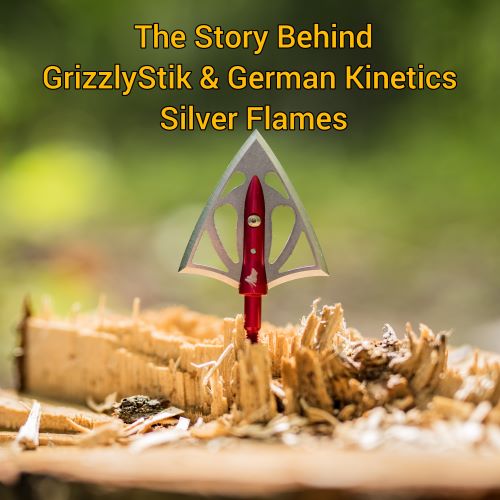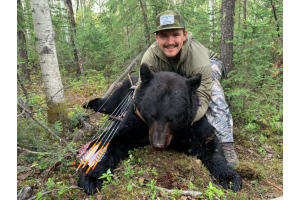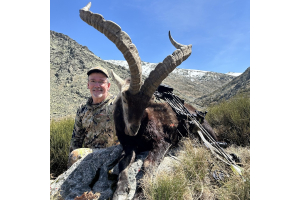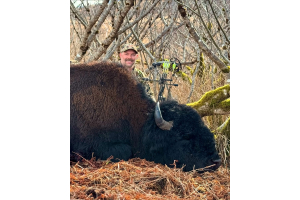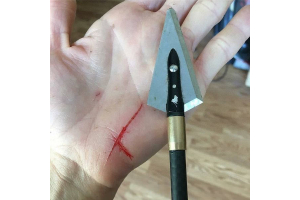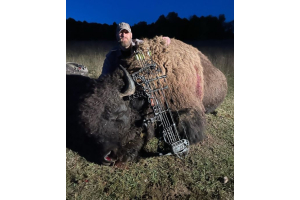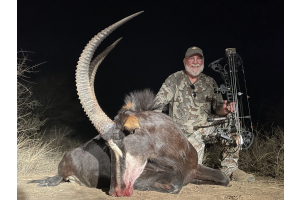GrizzlyStik Founder demonstrates the effect of point weight & FOC on arrow trajectory.

The internet's best explanation of the effect of point weight & FOC on arrow trajectory.
As arrow weights have increased over the past several years, many bowhunters have a legitimate question - how much drop does a heavy arrow have? The late GrizzlyStik founder Ed Schlief explains what you should expect in arrow trajectory and shows you in step-by-step detail. Shots are made with 100, 125, 150, 175, 200 & 315 field points to illustrate the difference.
Once he found Dr. Ashby's research, Ed's curiosity became a full-blown obsession to learn more about the "science" behind lethal arrow penetration. Here is a montage Ed made while breaking Moose Bones back in 2007. These videos were self-filmed and originally shot to show our engineer and those in the "inner circle" what was happening. Several times throughout this video you can hear the excitement and enthusiasm in Ed's voice as he is explaining the arrow penetration. He knew we were on to something......Many of the things he talked about over a decade ago still hold true to this day.
Recap of Ed's transcript:
Hi, this is Ed with Alaska Bowhunting Supply (GrizzlyStik's parent company). In this video, I'll delve into the impact of point weight on arrow trajectory. Bow hunters often fret about the trajectory drop when adding heavier point weights to their arrows. Let's debunk some myths and understand the science behind it.
[Rifle Hunter Analogy]
Rifle hunters grasp the correlation between bullet weight and trajectory effortlessly. For instance, a deer hunter zeroing a rifle for a 125 grain bullet won't head to Canada for moose with 220 grain bullets without recalibration. It's a matter of compensating for trajectory loss. The principle is analogous to bow hunting, yet it seems less intuitive for some bow hunters.
[Experiment Setup]
Today, we're using a Bowtech Destroyer set at 70 pounds, coupled with a precise machine called a Hooter Shooter. This setup ensures consistent accuracy, eliminating human error. We'll be shooting at a 35-yard target to observe the effects of varying point weights on trajectory.
[Point Weight Test]
Using Grizzly Stick field points ranging from 100 to 315 grains, we'll measure trajectory deviations. Each shot will reveal how different point weights influence arrow flight. As we increase the point weight, we anticipate a trajectory drop, but the extent is what we're keen to explore.
[Results Analysis]
Our results unveil a predictable pattern. With the 100 grain point, our reference shot landed marginally off target. As we escalated the point weight, the trajectory adjusted accordingly. However, the drop wasn't as dramatic as anticipated. Even with a significant increase to 315 grains, the deviation remained manageable.
[Importance of Forward of Center (FOC)]
Understanding FOC is pivotal in optimizing arrow performance. Higher FOC translates to greater penetration, enhancing lethality. By fine-tuning point weight to achieve optimal FOC, bowhunters can maximize arrow effectiveness.
[Conclusion]
In conclusion, this experiment underscores the significance of FOC and challenges misconceptions surrounding point weight and trajectory. By selecting the right combination of point weight and FOC, bowhunters can enhance arrow performance and ensure ethical hunting practices. I encourage you to conduct similar experiments and explore the impact of point weight on arrow trajectory firsthand. Your findings may surprise you and revolutionize your bowhunting approach. Happy hunting this fall!


